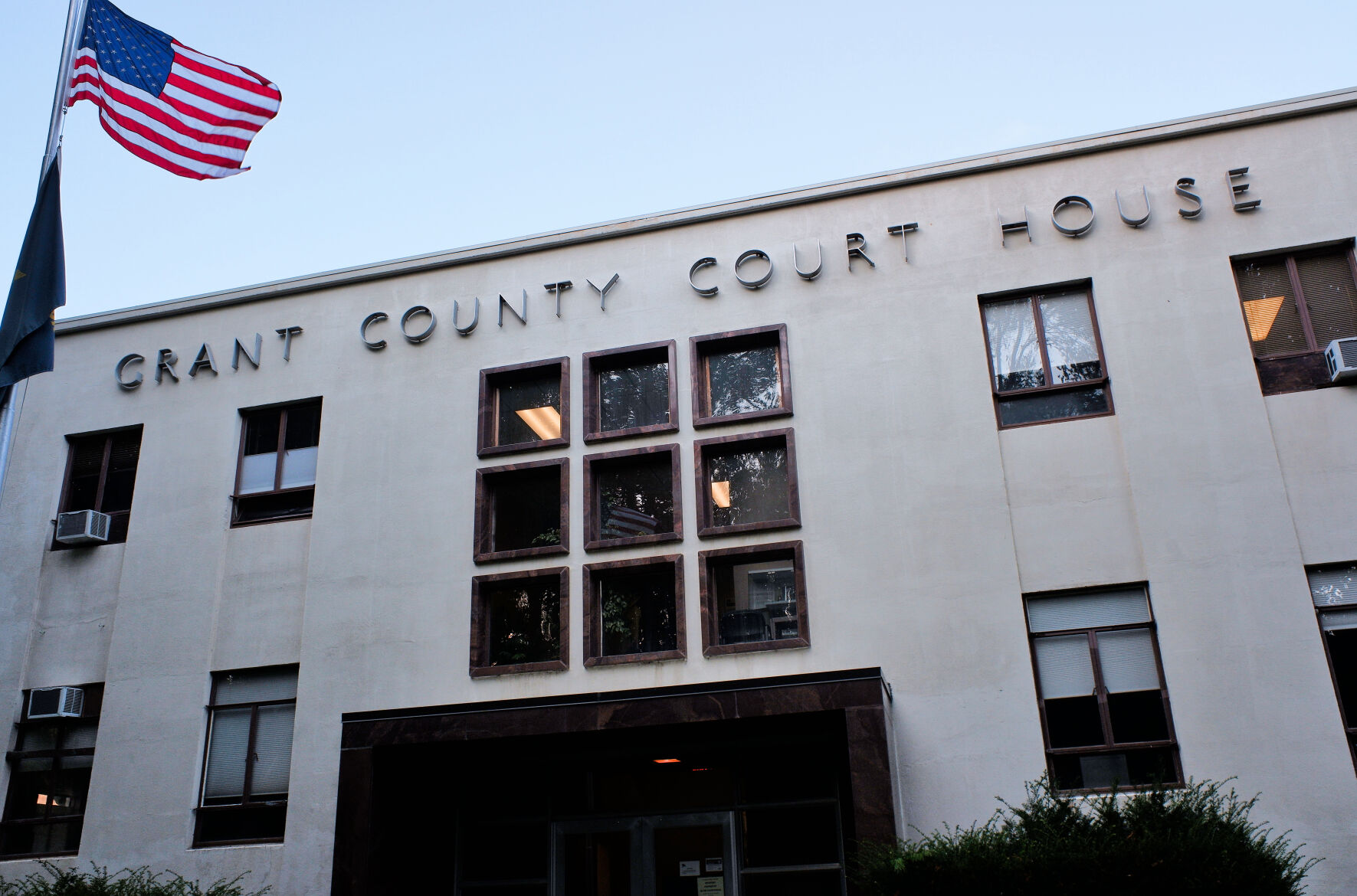Out and About: The summit beckons
Published 3:00 pm Saturday, March 2, 2024

- Jacoby
The peak of a mountain draws the hiker’s eye, as irresistible as a gumdrop wedged into the frosting atop a cake.
Or a piece of pepperoni on a slice of pizza, its concavity partially filled with grease, if your salivary glands are more readily roused by the savory than the sweet.
Anyway, the urge to stand on the top can be powerful.
More so, it seems to me, when the summit is isolated.
And never is this compulsion so insistent as when the apex is capped by something which appears, at a distance, to be manmade.
Sometimes the structure is easy to discern, even without binoculars or a spotting scope.
Fire lookouts, for instance, usually are conspicuous.
But smaller features can be more mysterious.
I’ve been curious for many years about the butte in the juniper hills just west of Durkee Valley, about 25 miles southeast of Baker City.
Seen from the southeast, along the Burnt River Canyon Road at a distance of about 2 miles, the unnamed mountain’s summit, made of dark brown rock and bare of trees, appears to have a pair of horns, rather like antennae jutting from an insect’s head.
I’ve hiked in the area, which is almost exclusively public land, a few times over the past few years.
The relatively low elevation — about 2,700 feet where a dirt road branches off the gravel Burnt River Canyon Road — means the snow comes off earlier than in much of Baker County.
On Feb. 25 my wife, Lisa, and I drove to the area with a goal of climbing the butte and finally finding out what’s up there.
(Not to exaggerate the mystery; I glassed the peak and it seemed all but certain that the horns were rock cairns. But we were determined just the same to see for ourselves.)
I turned off the Burnt River Canyon Road with some trepidation.
Late winter is a capricious season, in weather and, more problematic for my plans, in mud.
The previous few days had been dry but I still worried that the road, or at least sections, would have the porridge-like consistency for which roads in the rangelands of eastern Baker County, particularly in the spring when the frost is going out of the ground, are notorious.
(The same affliction affects much of Eastern Oregon.)
I don’t mind muddying our Toyota FJ Cruiser, to be sure. There are nooks and crannies in the rear wheel wells that I’m sure have layers of dirt that, like the strata in a geological formation, date back many years.
But I try to avoid carving especially deep ruts in roads.
I needn’t have fretted. The road was dry. I even saw a few puffs of dust roiling behind the rig as we rolled along,
There is no road to the summit that was our goal, but according to maps I consulted, both paper and digital, a road climbs to the top of a ridge not far west of the peak.
I wanted to park far enough away that we had a hike of decent duration, but not so distant that we wouldn’t actually reach our destination in a reasonable time.
I stopped at a flat beside a grove of junipers on the south side of Wood Gulch.
(A name which does not appear on any of the maps I looked at. I got the name from a Durkee Valley resident.)
We hiked the road, which began to climb, rather steeply in places, up the canyon to the west.
The remnants of a range fire were obvious — scattered black charred juniper stumps and the bone-gray skeletons of sagebrush.
The two features on all my maps are a pair of waterholes for cattle — Benchmark and Coyote.
The former is in the bottom of the gulch, the second just below the road as it curves into a draw.
The road, perversely, seemed to have no inclination to come close to the butte. Benchmark Waterhole is just about due south, but the road continued west so we were actually getting farther away.
We crossed a couple patches of slushy snow where a steep roadcut sheltered the road. It was muddy in spots, too, until we climbed out of the draw onto a rocky plateau.
We saw ahead a tall metal water tank, and even though the road was at that point heading directly away from the butte, we of course had to get a look at the tank.
These sentinels often are the biggest manmade objects in the arid hinterlands of Eastern Oregon. This is a considerable vessel, perhaps 15 feet tall and 10 feet wide. I wondered whether it was hauled here on a trailer or dangling from a helicopter.
It turned out that we didn’t need to backtrack. The saddle where the tank is placed is also the junction with a road that heads north to the top of the ridge just west of the butte.
It’s a short road but also a steep one. Not so much a road as a bulldozer track that was bludgeoned rather than engineered. I rather like these utilitarian routes. They epitomize the concept of getting to where you need to go the straightest way possible, and never mind the verticality.
When we crested the ridge the view, as it so often does on such eminences, suddenly sprawled. Big Lookout Mountain dominated the northeast horizon. Although clouds that were the vanguard of the storm that would bring snow to Baker City the next day cloaked the peaks of the Wallowas, we could see enough to recognize how grand the vista would be on a clear day. And to the west we could make out a sedimentary shoulder of the Elkhorns.
This is not really remote county, to be sure.
Interstate 84 is just 3 miles or so to the north. We could hear the hum of traffic, and watch the semi trucks, their white trailers crawling through the Durkee Valley.
From the top we followed the track of an abandoned water line, which I presume once filled cattle troughs, down a steep slope to the saddle between the ridge and the butte.
As we neared the latter, the two cairns on its peak were obvious.
They are stout constructions, each six feet tall or so and made of several dozen stones. The ones near the bases are boulders that surely top 100 pounds. I suspect quite a lot of sweat was expended in their construction. Probably a few fingers were wounded.
The rock, as near as I can tell from a geologic map, is either basalt or andesite. Both are igneous rocks, the product of volcanic eruptions.
From the butte we could see our car across Wood Gulch. Its placement made clear how indirect our route had been, roughly a semicircle.
Rather than retrace our steps — about 3 miles, according to the app on Lisa’s phone — we headed directly for the Toyota. The slope of bunchgrass and rocks descending to Wood Gulch is steep but not excessively so, and the footing was relatively stable.
It took far less than half as long to get back, and the distance was a bit less than a mile.
We didn’t regret our choice, though.
The shortest way often isn’t the easiest, and rarely is it the most interesting, or scenic.
If You Go
From Baker City, drive east on Interstate 84 and exit at Durkee, near milepost 327. Turn right at the stop sign and drive through the “downtown” of the unincorporated town of Durkee, named for a pioneer family. After a third of a mile, just beyond the railroad tracks, turn right at a stop sign onto Old Highway 30.
Drive west on Highway 30 for 1.5 miles, then turn left onto paved Burnt River Canyon Road. Follow the road, which turns to gravel, for 2 miles to a junction with a dirt road. Follow the road for a couple hundred feet and then take the road that heads uphill to the left. This road leads up the canyon of Wood Gulch, passing Benchmark and Coyote waterholes. The butte topped with rock cairns is south of Wood Gulch, and is a prominent landmark seen from the road. The area is public land except for a small section the road crosses about 2 miles from Burnt River Canyon Road. There are cattle guards at each end of the private land section.






